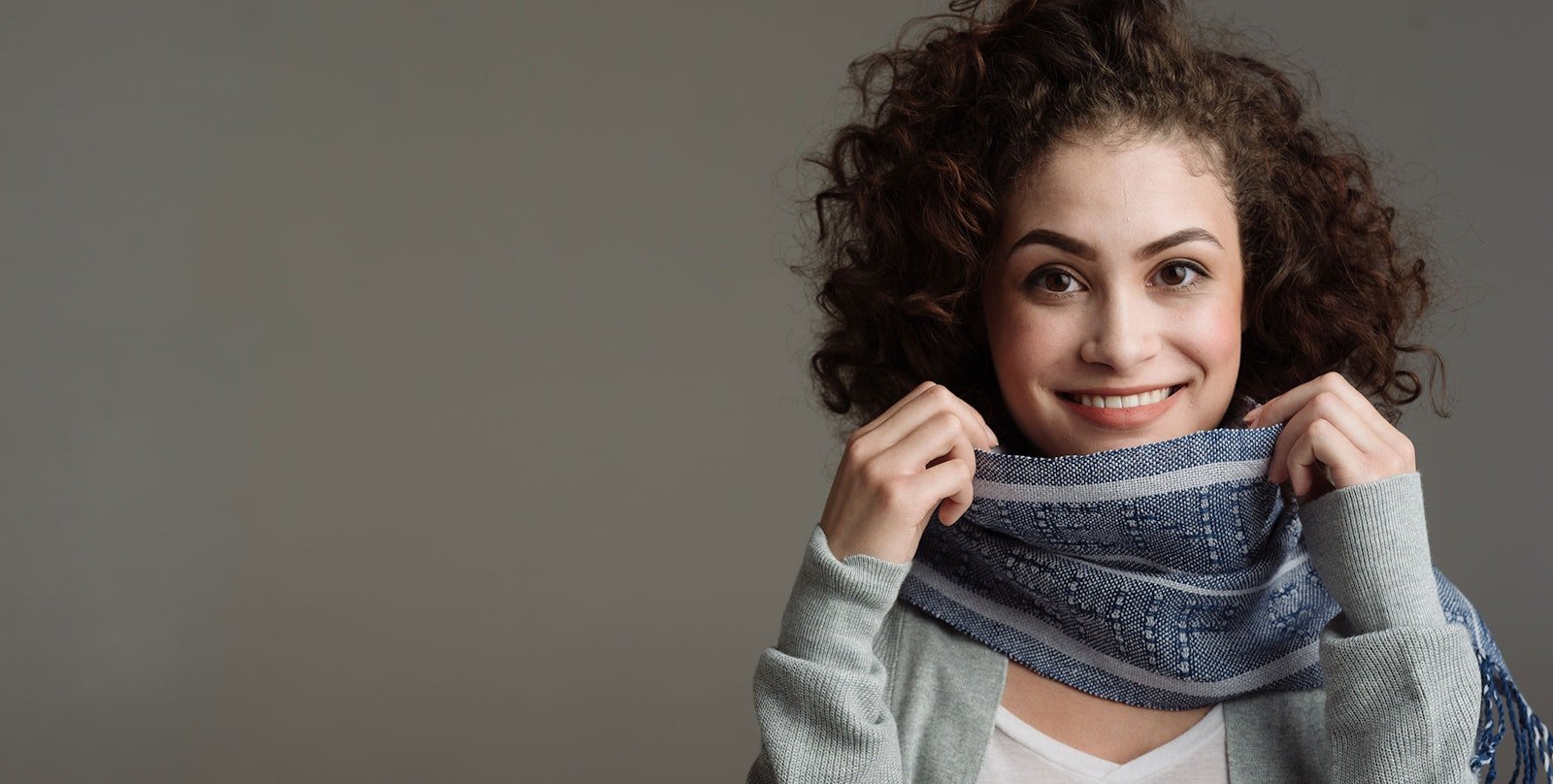When I was little, there was a kids’ song about a girl who would always combine polka dots, checks, and stripes in her outfits. Though I have not heard the song in a good 20-plus years, I can still remember part of the chorus: “Polka dots, checks, and stripes (all together); polka dots, checks, and stripes—yikes!” Clearly this song was not complimenting a young girl on her bold clothing choices.
What that song taught me from an all-too–young age is that it’s best to play it safe when it comes to patterns and color. Simple is better—don’t take sartorial chances or someday Parachute Express will write a song about you! It’s taken me years to undo that mindset and learn to take chances not only in my wardrobe, but also in my weaving. In the decades since I first heard that song, I’ve realized that it was perhaps the worst fashion advice I’d ever been given—it’s right up there with, “Oh, you’re a Winter, so you shouldn’t wear warm colors.” (For the record, I look fabulous in red and pink.)
Let’s talk a bit about the joys of mixing patterns, shall we? My all-time favorite handwoven projects combine patterns within the same piece of cloth. Take Madelyn van der Hoogt’s famous black and white deflected doubleweave scarves. They start with waves, move to flowers, and then the midsection is all stripes. In the past, such a combination would have been a fashion faux pas, but nowadays we can see that these patterns create a scarf that is beautiful, interesting, and (most importantly to us) fun to weave. So much of the fun of weaving deflected doubleweave is all the exciting ways you can create different shapes—shapes not easily possible in other structures.
Madelyn’s scarf from the January/February 2007 issue of Handwoven.
And then there’s color. When was the last time you really explored color interactions on the loom? I love to experiment with color, and I’ve created some beautiful pieces through trial and error or happy accidents. In fact, one of my absolute favorite towels was perfectly unplanned. I was weaving a set of red and white Finnish twill towels for a friend’s wedding present, so I made sure to add on enough warp for an extra towel just in case there was a problem. I wove the wedding towels without a hitch, so I decided to weave that last towel using a bright turquoise. I thought the towel would be interesting experiment at best and an ugly towel at worst—it ended up looking almost iridescent. It also immediately went into my “show towel” drawer, reserved for decorative use only.
Christina’s favorite Finnish twill towel.
It’s also fun to combine both random patterns and color. One Thanksgiving I was weaving towels and once again I put on enough warp to weave two towels plus a bit extra, just in case. The towels turned out just fine, so I decided to weave up a bread cloth with the extra warp using my collection of bobbins from projects past. To celebrate the random weft choices, I also chose to improvise my treadling throughout; whatever suited my fancy in the moment is what I treadled. To date, this is one of my husband’s favorite of my projects.
Christina didn’t preplan her treadling or her color order for this bread cloth; instead she chose what felt right in the moment.
There is beauty in bold choices and experimentation. Even when experiments go wrong (and I have gone wrong before), they’re lessons in design. As with all things, having a solid foundation of weaving knowledge will help you have more successes than failures. Understanding weave structures and how they work will let you better play with them. If you love Madelyn’s scarves as much as I do, I cannot recommend her video on deflected doubleweave enough. If you’re into something more 4-shaft friendly but also chock-full of design potential, I learned just about everything I know about twill from Robyn Spady and her videos on the subject. As for color? There are a lot of resources out there that teach you about matching colors, but we all know that weaving is a different beast than, say, knitting. Colors that look beautiful together on your studio shelf might not play nicely on the loom. In her video on the subject, Deb Essen explores how colors work together in weaving so you can make more informed—and exciting—choices.
Happy Weaving!
Christina




